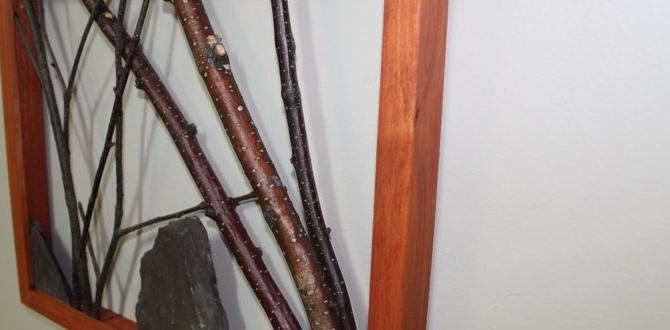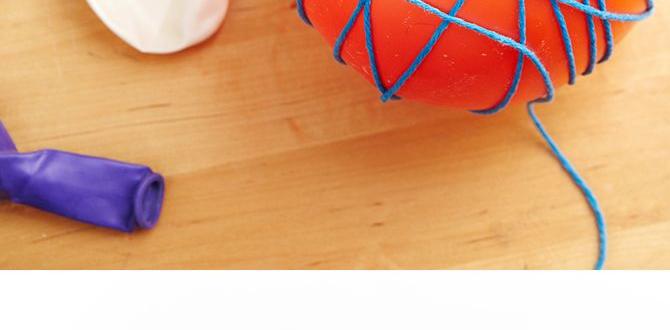Quick Summary: For baseboards, a finish nailer is generally the superior choice. It drives longer nails (1.5″ to 2.5″) that offer better holding power, preventing baseboards from separating from the wall. Brad nailers use shorter, thinner nails that might not be strong enough for this task.
Hey there, DIYers! Jack Shaffer here, your go-to guy for all things nailers. Are you looking to add that finishing touch to a room with fresh baseboards? That’s fantastic! It’s a project that can really elevate your space. But then comes that nagging question: which nailer should you grab? Specifically, when it comes to those important baseboards, do you go with a finish nailer or a brad nailer? It’s a common point of confusion for many, and getting it wrong can lead to wobbly trim or noticeable nail holes. Don’t worry, though! We’re going to break down exactly what you need to know to make the best choice, easily and confidently. Let’s get your baseboards looking sharp!
Table of Contents
Finish Nailer vs. Brad Nailer for Baseboards: Why It Matters
Choosing the right nailer for installing baseboards isn’t just about making the job easier; it’s about ensuring a professional, long-lasting result. Baseboards are a visual element of your room, but they also serve a crucial structural purpose, covering the seam between your walls and floors. They take some stress from everyday life – vacuum cleaners bumping them, kids running past – so they need to be securely attached.
A finish nailer drives nails that are longer and thicker than those used by a brad nailer. This means they have more holding power. For baseboards, which can be made of wood or MDF and can vary in thickness, it’s essential to have nails that can securely anchor them to the wall studs. If the nails are too short or too thin, the baseboards can sag over time, or the joints where two pieces of trim meet might start to separate.
On the other hand, a brad nailer is designed for more delicate trim work, like crown molding, window casings, or smaller decorative pieces. Its nails are much finer, leaving a smaller hole that’s easier to fill and conceal. While great for those smaller applications, they often lack the strength and depth needed for robust baseboard installation.
So, while both are pneumatic nailers and might look similar, their intended purpose and the fasteners they use make a big difference for a project like baseboards. Let’s dive into the specifics of each tool and how they stack up for this particular job.
Understanding the Tools: Finish Nailers and Brad Nailers
Before we put them head-to-head for baseboards, let’s get a clear picture of what each nailer is all about. Knowing their strengths and weaknesses will make your decision crystal clear.
What is a Finish Nailer?
A finish nailer is your go-to tool for installing trim that needs a good grip. Think of it as the workhorse for medium-duty applications in woodworking and carpentry. These nailers drive “finish nails,” which are typically characterized by their relatively small heads and longer shanks compared to brad nails.
The key features of a finish nailer include:
- Nail Size: They commonly use nails ranging from 1.5 inches up to 2.5 inches or even longer, depending on the model. These nails have a slim shank that minimizes damage to the wood but are long enough to penetrate through trim and securely into wall studs.
- Nail Head: Finish nails have a small, discreet head that is designed to be easily countersunk below the wood surface. This allows for simple filling with wood putty or filler, creating a nearly invisible fastening point.
- Power and Holding Power: The longer, slightly thicker nails driven by a finish nailer provide excellent holding power. This is crucial for trim pieces that need to resist sagging or pulling away from the wall over time.
- Applications: They are perfect for installing baseboards, door and window casings, chair rails, crown molding (especially thicker profiles), and other interior trim work.
When you’re working with baseboards, especially those made from solid wood or denser composite materials, the robust fastening capability of a finish nailer is a significant advantage. You can be confident that your baseboards will stay put, resisting the forces that can cause them to bow or separate from the wall.
What is a Brad Nailer?
A brad nailer is a more delicate instrument, designed for lighter trim and molding projects where appearance is paramount and the holding power requirements are less demanding. Its primary advantage is its ability to drive very thin, small-headed nails with minimal marring to the surface.
Key characteristics of a brad nailer:
- Nail Size: They use “brads,” which are very thin nails, typically ranging from 5/8 inch to 1.5 inches in length. The thinness of the nail minimizes splitting of delicate wood or trim.
- Nail Head: Brad nails have very small heads – almost pin-like. This makes them incredibly easy to conceal. After firing, the head can usually be set just below the surface, requiring only a tiny bit of filler to become invisible.
- Holding Power: Due to their thinness and shorter length, brads offer less holding power compared to finish nails. They are best suited for securing lightweight trim pieces or for applications where the trim is primarily decorative and not under significant physical stress.
- Applications: Ideal for smaller decorative moldings, attaching quarter-round or shoe molding to baseboards, picture framing, and delicate craft projects.
While a brad nailer is fantastic for its finesse, applying it to baseboards is generally not recommended for the main structural fastening. The nails are simply not long or strong enough to reliably secure baseboards to wall studs. You might find yourself needing to use many more nails, and they still might not provide the long-term stability required.
Comparing Performance: Finish Nailer vs. Brad Nailer for Baseboards
Let’s get down to brass tacks. When we pit these two tools against the specific demands of installing baseboards, the distinction becomes very clear. We’re not just talking about different nail sizes; we’re talking about different levels of performance and suitability.
Holding Power: The Crucial Factor
The most significant difference lies in the nails themselves, and consequently, the holding power they offer. Baseboards are installed vertically, facing the open space of your room. They are subject to being bumped by furniture, cleaning supplies, and general traffic. They also need to resist gravity and any slight imperfections in the wall.
- Finish Nailer: Drives longer and often slightly thicker nails. These nails have a better chance of reaching and securely embedding into the wall studs behind your drywall. This provides a strong anchor that prevents the baseboard from sagging, separating, or becoming loose over time. For example, a 2-inch finish nail provides substantially more grip than a 1.5-inch brad.
- Brad Nailer: Drives short, thin nails. These nails are often too short to reliably hit a wall stud consistently, especially if your baseboards are a bit thicker or your drywall is standard. Even if they hit a stud, their thinness means they offer less resistance to forces pulling the baseboard away from the wall. This can lead to loose trim or joints splitting apart down the line – a frustrating outcome for any DIYer.
Nail Size and Depth
The nail dimensions are a direct reflection of each tool’s intended use:
| Nailer Type | Typical Nail Length | Typical Nail Gauge (Thickness) | Primary Use |
|---|---|---|---|
| Finish Nailer | 1.5″ – 2.5″ (and longer) | 14-16 Gauge | Baseboards, Door/Window Casing, Crown Molding |
| Brad Nailer | 5/8″ – 1.5″ | 18-20 Gauge | Small trim, decorative molding, picture frames |
As you can see, the longer, more substantial nails of a finish nailer are clearly better suited for gripping baseboards in place. The gauge number actually increases as the nail gets thinner (hence, 18-gauge is thinner than 14-gauge), reinforcing the idea that brad nails are much finer.
Aesthetics and Ease of Concealment
This is where the brad nailer shines, but it’s worth considering how it applies to baseboards.
- Finish Nailer: The nails are small but still have a head that needs to be sunk. You’ll use a nail set or let the nailer sink it just below the surface. A bit of wood filler or putty will then cover the hole. This process is standard for trim work and results in a clean, nearly invisible finish.
- Brad Nailer: The nails are so fine that the holes are very small and easy to fill with a dab of putty. Some might argue this makes finishing easier. However, if the nails aren’t holding well, a perfect finish is little consolation for a failing installation.
The difference in the visibility of the nail hole is usually minimal once you’ve done a bit of filling. With a finish nailer, you get the superior hold AND a finish that’s easy to perfect. With a brad nailer for baseboards, you’re sacrificing the hold for a slightly easier fill, which is generally not a good trade-off.
Material Considerations
Baseboards can be made from various materials, and this might influence your choice, but often still points to the finish nailer.
- Solid Wood: Naturally, a finish nailer is ideal for solid wood, as its longer nails can easily penetrate and grip.
- MDF (Medium-Density Fiberboard): MDF can be prone to splitting if you try to drive fasteners too close to an edge, or if the fasteners aren’t substantial enough to grip. The thinner profile of brad nails can sometimes cause issues with MDF separation. A finish nailer’s slightly larger diameter nails can sometimes provide better adhesion in MDF, though care is still needed.
- Pine or Poplar: These are common softer woods for baseboards. A finish nailer is perfect for these, ensuring secure attachment without excessive damage.
The consensus remains that for the majority of baseboard materials, the longer, stronger nails of a finish nailer are the safer and more effective choice.
When Might a Brad Nailer Be Useful for Baseboards? (The Exception to the Rule)
While I strongly recommend a finish nailer for the primary installation of baseboards, there are a couple of very specific, secondary scenarios where a brad nailer could make an appearance.
Attaching Shoe Molding or Quarter Round
Many baseboards have a small, curved piece of trim called shoe molding or quarter round attached to their bottom edge. This piece covers any small gaps between the baseboard and the floor, providing a very clean transition and protecting the lower edge of the baseboard. These pieces are typically very thin and lightweight.
For this specific task, a brad nailer is often the perfect tool because:
- The shoe molding is thin and can be easily split or damaged by larger nails.
- The nails don’t need to go into wall studs, only into the baseboard itself.
- The small, fine heads of brad nails are very easy to conceal against the delicate profile of the molding.
So, if you’re installing baseboards and adding shoe molding, you might use a finish nailer for the baseboards and then switch to a brad nailer for the shoe molding.
Repairing Small Gaps or Reinforcing Joints (with caution)
In some very rare cases, if you have a tiny, insignificant gap in a joint that you want to secure with a smaller nail, a brad nailer might be considered. However, this is more of a cosmetic fix than a structural one. It’s crucial that the main baseboard is already securely fastened with proper nails. Using a brad nailer here doesn’t solve a fundamental fastening problem, but might help tidy up a minor cosmetic issue.
Important Note: Even in these secondary applications, always ensure you’re using nails long enough to penetrate the material sufficiently without poking through. For shoe molding, this means ensuring the brad goes through the molding and into the baseboard by at least 1/2 inch. Always err on the side of caution and check for nail protrusion on the back side.
Choosing Your Finish Nailer: Key Considerations
Now that we’ve established the finish nailer as the champion for baseboards, let’s talk about what to look for when you’re ready to buy or rent one. There are a few types of finish nailers, each with its pros and cons.
Types of Finish Nailers
- Pneumatic (Air-Powered) Finish Nailers: These are the most common and often the most powerful. They require an air compressor and an air hose.
- Pros: Lightweight in hand (the tool itself is light, the compressor does the heavy lifting), reliable power, generally more affordable tool cost, vast range of models.
- Cons: Requires an air compressor, the hose can be cumbersome to maneuver, need to purchase or rent a compressor.
- Cordless Battery-Powered Finish Nailers: These run on rechargeable batteries and have an integrated air pump or use gas cartridges (less common for finish nailers).
- Pros: Ultimate portability, no hoses or compressors needed, quick setup and teardown.
- Cons: Heavier tool weight due to battery, can be more expensive upfront, battery life can be a concern on large projects, sometimes slightly less consistent power than pneumatic in extreme cold.
- Electric Corded Finish Nailers: These plug directly into a wall outlet.
- Pros: No need for fuel or batteries, lighter than cordless versions.
- Cons: Limited by cord length, risk of cord entanglement or damage.
What to Look For in a Finish Nailer for Baseboards:
- Gauge: For baseboards, a 15-gauge or 16-gauge finish nailer is ideal. 15-gauge offers a bit more holding power, while 16-gauge leaves a slightly smaller hole. Both are excellent choices. Avoid 18-gauge or smaller (those are for brad nailers or smaller trim).
- Nail Capacity: Ensure it can handle nail lengths of at least 1.5 inches and preferably up to 2 inches or 2.5 inches. This gives you flexibility for different baseboard thicknesses.
- Depth Adjustment: This is crucial! It allows you to control how deep the nail sinks into the wood. You want to be able to sink the nail slightly below the surface for easy filling, but not so deep that you break through the wood or create an unnecessarily large hole. Most good finish nailers have this feature.
- Dry-Fire Lockout: This prevents the nailer from firing when it’s out of nails. It saves wear and tear on the tool and prevents accidental empty pokes, which can damage your workpiece.
- Swiveling Exhaust: While not directly impacting the nail, a swiveling exhaust port directs air and debris away from your face and workspace, making the job more pleasant.
- Ergonomics and Weight: If you’re doing an entire house, the weight and how comfortable the tool feels in your hand can make a big difference. cordless models tend to be heavier due to batteries.
For many DIYers, a pneumatic finish nailer paired with a small portable air compressor offers a fantastic balance of power, cost, and capability for baseboards and a wide range of other trim projects. If ultimate portability is your priority and budget allows, a cordless model is a great investment.
Step-by-Step: Installing Baseboards with a Finish Nailer
Ready to tackle those baseboards? Here’s a straightforward guide using your new best friend, the finish nailer.
Essential Tools and Materials:
- Finish Nailer: (15 or 16 gauge recommended)
- Air Compressor & Hose: (if using pneumatic)
- Nails: Correct gauge and length for your finish nailer, suitable for your baseboard material (e.g., 1.5″ to 2″ nails).
- Baseboards: Your chosen material.
- Measuring Tape
- Pencil
- Miter Saw: For accurate cuts (angle cuts for corners).
- Safety Glasses: Non-negotiable!
- Hearing Protection: Recommended, especially with pneumatic tools.
- Nail Set (optional but helpful): For sinking nails perfectly if the nailer doesn’t do it automatically.
- Wood Filler or Putty: To fill nail holes



